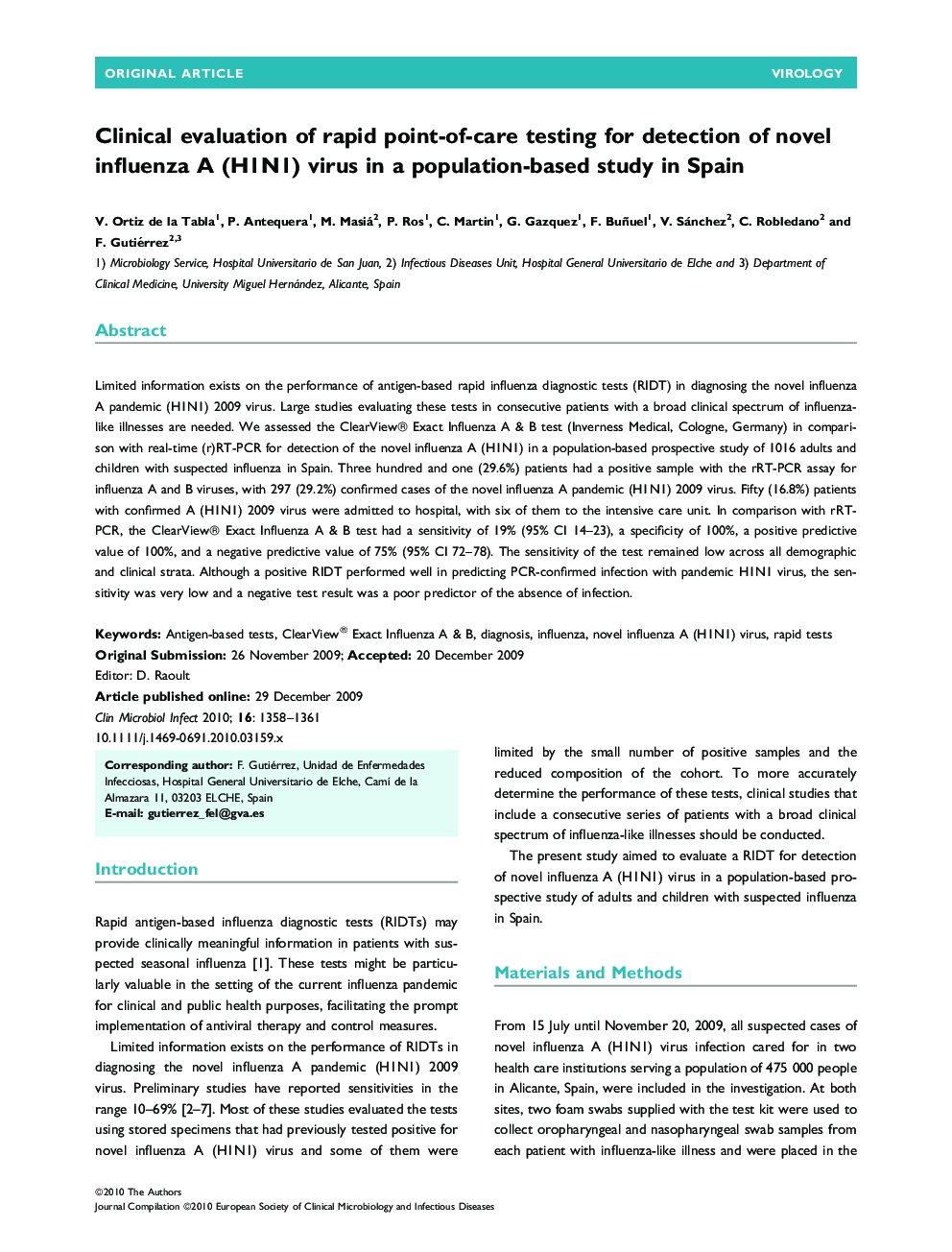| Article ID | Journal | Published Year | Pages | File Type |
|---|---|---|---|---|
| 6131182 | Clinical Microbiology and Infection | 2010 | 4 Pages |
Abstract
Limited information exists on the performance of antigen-based rapid influenza diagnostic tests (RIDT) in diagnosing the novel influenza A pandemic (H1N1) 2009 virus. Large studies evaluating these tests in consecutive patients with a broad clinical spectrum of influenza-like illnesses are needed. We assessed the ClearView® Exact Influenza A & B test (Inverness Medical, Cologne, Germany) in comparison with real-time (r)RT-PCR for detection of the novel influenza A (H1N1) in a population-based prospective study of 1016 adults and children with suspected influenza in Spain. Three hundred and one (29.6%) patients had a positive sample with the rRT-PCR assay for influenza A and B viruses, with 297 (29.2%) confirmed cases of the novel influenza A pandemic (H1N1) 2009 virus. Fifty (16.8%) patients with confirmed A (H1N1) 2009 virus were admitted to hospital, with six of them to the intensive care unit. In comparison with rRT-PCR, the ClearView® Exact Influenza A & B test had a sensitivity of 19% (95% CI 14-23), a specificity of 100%, a positive predictive value of 100%, and a negative predictive value of 75% (95% CI 72-78). The sensitivity of the test remained low across all demographic and clinical strata. Although a positive RIDT performed well in predicting PCR-confirmed infection with pandemic H1N1 virus, the sensitivity was very low and a negative test result was a poor predictor of the absence of infection.
Keywords
Related Topics
Life Sciences
Immunology and Microbiology
Microbiology
Authors
V. Ortiz de la Tabla, P. Antequera, M. Masiá, P. Ros, C. Martin, G. Gazquez, F. Buñuel, V. Sánchez, C. Robledano, F. Gutiérrez,
